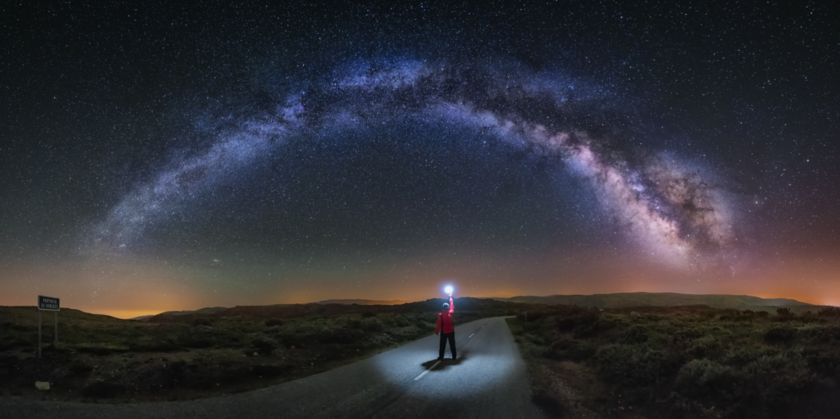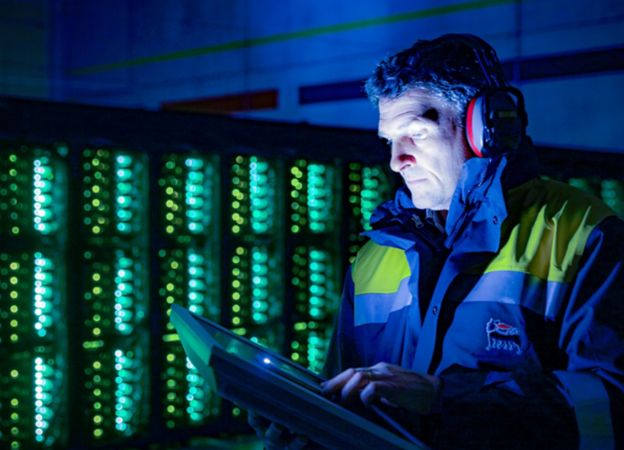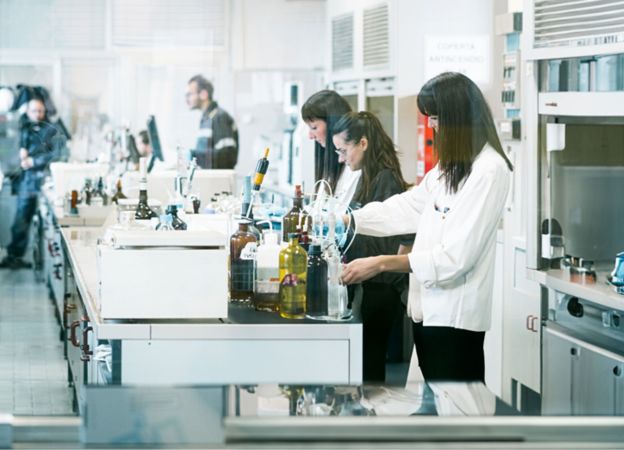
CFS
Siamo partner strategici di Commonwealth Fusion Systems nella ricerca per lo sviluppo industriale della fusione a confinamento magnetico.

Oppure , la nostra nuova soluzione di intelligenza artificiale.
Oppure , la nostra nuova soluzione di intelligenza artificiale.
Una soluzione tecnologica che genera grandi quantità di energia con un processo sicuro, sostenibile e virtualmente inesauribile.

La fusione a confinamento magnetico libera un’enorme quantità di energia senza emettere gas a effetto serra e con il vantaggio di un processo sicuro e virtualmente illimitato, imitando la reazione naturale che alimenta le stelle.

ordine di grandezza delle temperature a cui avviene la fusione sulla Terra
combustibile necessario ad alimentare una città di 1 milione di persone per un giorno
La fusione di due nuclei d’idrogeno libera un’enorme quantità di energia ed è la reazione fisica, totalmente naturale, che alimenta il Sole e le altre stelle. Nel processo di fusione l’unione di due atomi leggeri, come gli isotopi dell’idrogeno, dà origine ad un elemento, come l’elio, con una massa leggermente inferiore della somma dei due nuclei iniziali. Questo “difetto di massa” viene convertito in una enorme quantità di energia, secondo la famosa equazione di Einstein (E=mc2). Il grande vantaggio dell’energia da fusione è che non emette gas a effetto serra, né sostanze fortemente inquinanti o altamente radioattive, rendendola una fonte energetica estremamente interessante. Inoltre, sfrutta un processo virtualmente inesauribile perché utilizza come combustibile due isotopi dell’idrogeno: il deuterio, che è ricavato dall’acqua di mare, e il trizio, che può essere prodotto nel processo da una reazione fisica con il litio. Inoltre la quantità di energia generata in questo processo è immensa: secondo l’International Atomic Energy Agency la fusione potrebbe infatti generare circa quattro milioni di volte più energia per chilogrammo di combustibile rispetto alla combustione del carbone!
La fusione è molto difficile da replicare artificialmente sulla Terra, in quanto occorre sostituire il contributo della gravità che è presente nelle stelle e favorisce la reazione, portando gli isotopi dell’idrogeno a temperature elevatissime, pari ad oltre 100 milioni di gradi, circa dieci volte quelle del nucleo del Sole. In particolare, la reazione che permette la fusione avviene in un gas ionizzato ad altissima temperatura chiamato plasma. In combinazione con queste alte temperature, un plasma stabile si può ottenere sulla Terra attraverso il confinamento magnetico che, come dice il nome, impiega campi magnetici potentissimi per confinare il plasma in cui avviene la fusione, all’interno di macchine sottovuoto a forma di ciambella (geometricamente un toroide), chiamate “Tokamak”. Da qui il nome della tecnologia: fusione a confinamento magnetico. Il plasma ad altissima temperatura viene quindi generato, sostenuto e confinato all’interno della camera senza permettergli di entrare a contatto con le pareti.
In sintesi, per generare energia da un reattore a fusione si immette nel Tokamak una miscela di deuterio e trizio, la si riscalda con opportuni accorgimenti portandola prima allo stato di plasma e poi, aumentando ancora di più la temperatura, alle condizioni di fusione. Il processo di fusione libera quindi neutroni molto energetici, che vengono assorbiti in un “blanket” o mantello, un rivestimento che contiene la camera di fusione. Il blanket ha infine il compito di assorbire l’energia cinetica dei neutroni e trasformarla in energia termica che viene poi utilizzata per la produzione di elettricità tramite sistemi noti e già utilizzati in altri tipi di centrale.
Eni reputa necessario avere uno sguardo proiettato nel lungo termine per contribuire in maniera sostanziale allo sviluppo di breakthrough tecnologici, come la fusione magnetica, tecnologia che potrebbe rivoluzionare il mondo dell’energia garantendo un futuro sostenibile, pulito e prospero.
Amministratore Delegato di Eni

Quando la fusione a confinamento magnetico diventerà matura a livello industriale si aprirà uno scenario completamente nuovo, in cui sarà possibile garantire una fornitura estesa di energia più pulita con un processo sicuro e virtualmente inesauribile. Centrali elettriche alimentate da reattori a fusione potranno soddisfare la crescente richiesta di energia di grandi insediamenti produttivi e urbani, mantenendo un’elevata sostenibilità. Impianti di dimensioni più piccole, integrati con le fonti rinnovabili, potranno facilitare l’alimentazione energetica di piccole comunità e realtà off-grid. Siamo stati tra le prime aziende energetiche ad investire nella fusione a confinamento magnetico, oltre che essere azionista strategico di Commonwealth Fusion Systems (CFS), una start-up spin-out del Massachusetts Institute of Technology di Boston, nella cui roadmap vi è la realizzazione del primo impianto a fusione in grado di immettere energia elettrica in rete entro i primi anni Trenta.
Siamo parte di diversi progetti per lo sviluppo dell’energia da fusione in collaborazione con partner scientifici d’eccellenza e aziende, in Italia e nel mondo.

Siamo partner strategici di Commonwealth Fusion Systems nella ricerca per lo sviluppo industriale della fusione a confinamento magnetico.

Nel Centro di ricerca congiunto Eni-CNR "Ettore Majorana" di Gela partecipiamo a una serie di studi su aspetti chiave della fusione.

Collaboriamo al progetto di ricerca Divertor Tokamak Test (DTT) portato avanti dall’Enea di Frascati (Roma).

Collaboriamo alle attività di ricerca e sviluppo tecnologico nel campo dell'energia da fusione per realizzare l’impianto più grande al mondo per la gestione del ciclo del trizio.
Questa tecnologia rappresenta una prospettiva concreta per una transizione energetica sicura e basata su una fonte virtualmente inesauribile.

Le realtà scientifiche e le aziende con cui collaboriamo nella fusione a confinamento magnetico.
I luoghi e le persone di Eni raccontano le tecnologie chiave della transizione - Gabriella Greison si sposta a Padova per parlare con Miriam Parisi di una grande sfida tecnologica: ricreare sulla Terra l'energia prodotta dal Sole con la fusione a confinamento magnetico che utilizza lo stesso principio in grado di far brillare le stelle.
15 maggio 2024

Se desideri cambiare argomento, svuota la chat ed effettua una nuova richiesta per ottenere risultati più pertinenti.
Questa azione comporterà l'eliminazione di tutte le domande fatte durante la fase di navigazione.
Con questa azione cancellerai ogni ricerca effettuata durante questa sessione di navigazione.
Qui puoi trovare la lista di tutte le tue richieste.
Le risposte sono generate dall'intelligenza artificiale, pertanto potrebbero contenere imprecisioni. Leggi i termini e condizioni di utilizzo

EnergIA è uno strumento innovativo basato sulle capacità dell’intelligenza artificiale, che può aiutarti a navigare tra i contenuti di eni.com, trovando subito la risposta alle tue domande. EnergIA può effettuare una ricerca su un tema specifico, fornendo i dati più aggiornati disponibili, oppure può invitarti ad approfondire un argomento di tuo interesse. Inizia subito!
EnergIA è uno strumento innovativo basato sulle capacità dell’intelligenza artificiale, che può aiutarti a navigare tra i contenuti di eni.com, trovando subito la risposta alle tue domande. Inizia ora!
EnergIA è un sistema basato sull’Intelligenza Artificiale Generativa.
Grazie a questa tecnologia riusciamo a rispondere alle tue richieste interrogando i contenuti e i documenti più rilevanti presenti su eni.com. (N.B. Vengono presi in considerazione i documenti finanziari degli ultimi 12 mesi e i comunicati stampa degli ultimi 2 anni.)
Attraverso EnergIA puoi approfondire le tematiche di tuo interesse e avere una finestra in tempo reale sul mondo Eni.
Se desideri, invece, cercare uno specifico documento, comunicato stampa o news, utilizza il motore di ricerca tradizionale tramite icona della lente.
Come tutti i sistemi che sfruttano l’Intelligenza Artificiale Generativa, EnergIA potrebbe generare risposte inesatte o non aggiornate. Ti invitiamo sempre a consultare le fonti che il sistema indica come origine dell’informazione generata.
In alcuni casi, in assenza di una perfetta corrispondenza con la richiesta, il sistema cerca comunque di fornire una risposta.
Qualora dovessi riscontrare delle inesattezze nella risposta fornita, ti preghiamo di segnalarcelo tramite il feedback disponibile a fondo pagina: ci sarà molto utile per migliorare.
Dal momento che quanto elaborato dal sistema non rappresenta la posizione ufficiale di Eni, invitiamo gli stakeholder interessati a conoscere le posizioni della Società a rivolgersi ai propri contatti di riferimento: Ufficio Stampa per i giornalisti, Investor Relations per analisti e investitori, Segreteria Societaria per gli azionisti etc..
EnergIA riesce a comprendere domande poste in quasi tutte le lingue, ma preferiamo fornirti una risposta in inglese o in italiano, le due lingue disponibili su eni.com.
Se poni una domanda in lingua italiana, saranno consultati i contenuti presenti sul sito in lingua italiana. Se la poni in inglese o in qualsiasi altra lingua, saranno consultati i contenuti in lingua inglese. (N.B. La lingua che Eni utilizza per i documenti/contenuti di carattere finanziario è prevalentemente l’inglese.)
Nel caso in cui vengano formulate domande che violino i criteri di sicurezza impostati, il sistema non procederà con l'elaborazione della risposta. Infine, ti chiediamo di non inviare dati personali.
Utilizzando questo servizio, l’utente dichiara di aver letto e accettato i termini e condizioni di utilizzo.
Ricerca
EnergIA è un sistema basato sull’Intelligenza Artificiale Generativa.
Grazie a questa tecnologia riusciamo a rispondere alle tue richieste interrogando i contenuti e i documenti più rilevanti presenti su eni.com. (N.B. Vengono presi in considerazione i documenti finanziari degli ultimi 12 mesi e i comunicati stampa degli ultimi 2 anni.)
Attraverso EnergIA puoi approfondire le tematiche di tuo interesse e avere una finestra in tempo reale sul mondo Eni.
Se desideri, invece, cercare uno specifico documento, comunicato stampa o news, utilizza il motore di ricerca tradizionale tramite icona della lente.
Come tutti i sistemi che sfruttano l’Intelligenza Artificiale Generativa, EnergIA potrebbe generare risposte inesatte o non aggiornate. Ti invitiamo sempre a consultare le fonti che il sistema indica come origine dell’informazione generata.
In alcuni casi, in assenza di una perfetta corrispondenza con la richiesta, il sistema cerca comunque di fornire una risposta.
Qualora dovessi riscontrare delle inesattezze nella risposta fornita, ti preghiamo di segnalarcelo tramite il feedback disponibile a fondo pagina: ci sarà molto utile per migliorare.
Dal momento che quanto elaborato dal sistema non rappresenta la posizione ufficiale di Eni, invitiamo gli stakeholder interessati a conoscere le posizioni della Società a rivolgersi ai propri contatti di riferimento: Ufficio Stampa per i giornalisti, Investor Relations per analisti e investitori, Segreteria Societaria per gli azionisti etc..
EnergIA riesce a comprendere domande poste in quasi tutte le lingue, ma preferiamo fornirti una risposta in inglese o in italiano, le due lingue disponibili su eni.com.
Se poni una domanda in lingua italiana, saranno consultati i contenuti presenti sul sito in lingua italiana. Se la poni in inglese o in qualsiasi altra lingua, saranno consultati i contenuti in lingua inglese. (N.B. La lingua che Eni utilizza per i documenti/contenuti di carattere finanziario è prevalentemente l’inglese.)
Nel caso in cui vengano formulate domande che violino i criteri di sicurezza impostati, il sistema non procederà con l'elaborazione della risposta. Infine, ti chiediamo di non inviare dati personali.
Utilizzando questo servizio, l’utente dichiara di aver letto e accettato i termini e condizioni di utilizzo.
Una nuova finestra sul mondo Eni, a tua disposizione. EnergIA è uno strumento innovativo basato sulle capacità dell’intelligenza artificiale, che può aiutarti a navigare tra i contenuti di eni.com, trovando subito la risposta alle tue domande.


